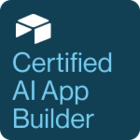Hi, I'm new to Airtable and I'm setting up Bases for a company with multiple teams (marketing, sales, project management, asset management & finance). When I set up Bases, is it best to set up separate Bases for each team or to have one Base with multiple Tables for the entire company? The teams share data for Accounts, Contacts, Asset ID and Deal Amount, so those will be common to all and needs to be the universal source of truth. Does it make sense to have one Base with those common/shared Tables and then share and sync the Bases, or to just do it all in one Base? If I created one Base, it will end up having many Tables and could become unwieldly, but seems much easier to create automations if everything is in one Base with multiple Tables. The end goal is to have one source of truth.
Organizing Bases
 +3
+3Best answer by AirBenderMarcus
Hey @MRC
The answer really depends on your exact use case, but best practices are to centralize data as much as possible. You're right that it will be far easier to manage automations out of a single base. If your team members are allowed to see each other's records and all have really similar workflows, then I recommend a single base. You can create multiple Views so each team member can organize/filter the data how they want.
An even more dynamic long-term solution is creating an Interface on top of your data which can be configured to only show records each member is assigned to. In this way, team members can access just access the Interface (without needing access to the Base and its Tables itself) and only ever get exposed to data that is directly related to their own work.
Enter your E-mail address. We'll send you an e-mail with instructions to reset your password.


